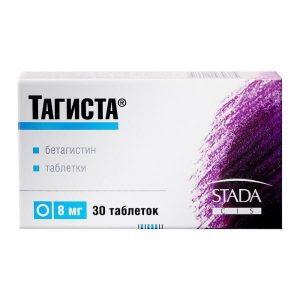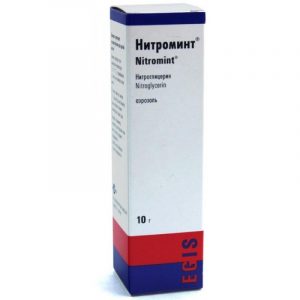Description
Packing
30 pcs
Pharmacological action
Carvedilol has a vasodilating, antianginal, antiarrhythmic effect. Blocks alpha1-, beta1- and beta2-adrenergic receptors. It does not have its own sympathomimetic activity, has membrane stabilizing properties. Carvedilol has an antioxidant effect, eliminating free oxygen radicals.
Indications
Arterial hypertension (monotherapy or in combination with other antihypertensive drugs), stable angina pectoris.
Contraindications
Hypersensitivity, chronic obstructive pulmonary disease, severe liver failure, severe bradycardia, sinus node weakness syndrome, AV block II and III degree (with the exception of patients with a pacemaker), decompensated heart failure, pulmonary hypertension or cardiogenic shock, arterial hypotension, pregnancy, breast-feeding, under 18 years of age (safety and effectiveness in persons under 18 years of age have not been established).
Use during pregnancy and lactation
The drug is contraindicated in pregnancy.
If it is necessary to use the drug Carvedilol Sandoz during lactation, breast-feeding should be canceled.
Dosage and administration of
Carvedilol is taken orally, after a meal, with a small amount of liquid. The dose is selected individually. Arterial hypertension: the recommended dose in the first 7-14 days is 12.5 mg / day in the morning after breakfast or divided into 2 doses of 6.25 mg, then 25 mg / day once in the morning or divided into 2 doses of 12.5 mg . After 14 days, the dose can be increased again. A Stable angina pectoris: the initial dose is 12.5 mg 2 times a day, after 7-14 days under the supervision of a doctor, the dose can be increased to 25 mg 2 times a day. After 14 days, with insufficient effectiveness and good tolerability of the drug, the dose can be further increased. The total daily dose should not exceed 100 mg (50 mg 2 times a day), over the age of 70 years – 50 mg / day (25 mg 2 times a day). When skipping the next dose, Carvedilol should be taken as soon as possible, however, if the time is approaching for the next dose, then only take it, without doubling. If it is necessary to cancel Carvedilol, the Obolensk dose reduction should be carried out gradually within 1-2 weeks.
Side effects of
At recommended doses, Carvedilol is well tolerated, but in some cases, side effects are possible.
From the digestive system: nausea, dry mouth, abdominal pain, diarrhea or constipation, vomiting, increased activity of hepatic transaminases.
From the nervous system: headache, dizziness, feeling tired, unconsciousness, muscle weakness (usually at the beginning of treatment), sleep disturbance, depression, paresthesia.
On the part of the sensory organs: decreased lacrimation.
From the genitourinary system: impaired renal function, edema, impaired urination.
From the side of hematopoiesis: leukopenia, thrombocytopenia.
Allergic reactions: urticaria, itching, rash, onset and / or exacerbation of psoriasis, sneezing, nasal congestion, bronchospasm, shortness of breath (in predisposed patients), very rarely anaphylactoid reaction.
From the CCC side: bradycardia, orthostatic hypotension, angina pectoris, AV block, progression of circulatory failure (cold extremities), progression of heart failure, exacerbation of intermittent claudication syndrome, Raynaud’s syndrome.
Endocrine Disorders: weight gain.
Other: limb pain, flu-like symptoms.
As with other drugs blocking alpha-adrenergic receptors, latent current diabetes mellitus may appear or its symptoms may intensify.
Drug Interactions
Catecholamine depleting agents (reserpine, MAO inhibitors) can cause severe bradycardia and hypotension. Concurrent administration of carvedilol to ACE inhibitors, thiazide diuretics, and vasodilators administered at the same time can lead to a dramatic drop in blood pressure. Increases the effect of insulin and sulfonylureas (simultaneously masking or reducing the severity of symptoms of hypoglycemia, reducing the breakdown of liver glycogen to glucose). When administered with insulin or oral hypoglycemic agents, blood glucose should be monitored. CYP2D6 isoenzyme inhibitors (quinidine, fluoxetine, propafenone) can increase the concentration of the R (+) – enantiomer of carvedilol. Co-administration with antiarrhythmic agents (especially class I) and BMCC (verapamil, diltiazem) can provoke marked arterial hypotension and heart failure. The intravenous administration of these drugs together with the administration of carvedilol is contraindicated. Increases the concentration of digoxin, which requires the control of its concentration, because concomitant administration with cardiac glycosides may lead to AV blockade. General anesthetics enhance the negative inotropic and hypotensive effects. Phenobarbital and rifampicin accelerate metabolism and decrease carvedilol plasma concentrations. Microsomal oxidation inhibitors (cimetidine), diuretics and ACE inhibitors increase the concentration and enhance the antihypertensive effect of carvedilol. Carvedilol delays the metabolism of cyclosporine.
Overdose
Symptoms: marked decrease in blood pressure (SAD 80 mmHg and below), pronounced bradycardia (less than 50 beats / min), respiratory dysfunction (bronchospasm, etc.), chronic circulatory failure, cardiogenic cardiac arrest.
Treatment: For the first two hours, induce vomiting and wash the stomach. Overdose requires intensive treatment, control of vital functions is necessary. The patient should be in a position with his legs elevated, ie. in the position of Trendelenburg. The antidotes to the beta-blocking action are orciprenaline or isoprenaline 0, 5 1 mg I / O and / or glucagon at a dose of 1 5 mg (maximum dose 10 mg). Severe hypotension is treated by parenteral administration of the fluid and re-administration of adrenaline at a dose of 5 10 mg (or its infusion at a rate of 5 μg / min). In case of excessive bradycardia, atropine at a dose of 0.5 2 mg is prescribed. To maintain cardiac activity: glucagon is injected quickly / within 30 seconds, after which a constant infusion of 2-5 mg / h is carried out. If peripheral vasodilator action (warm limbs, in addition to significant arterial hypotension) is predominant, norepinephrine should be prescribed at 5 10 μg as an infusion – 5 μg / min. For the treatment of bronchospasm appoint beta-adrenomimetics (in the form of aerosol or / in) or aminophylline in / in. If seizures develop, the slow introduction of diazepam or clonazepam is recommended. In severe cases of intoxication, when the symptoms of shock dominate, treatment should continue until the condition of the patient has stabilized, taking into account T1 / 2 carvedilol, which is 6 10 hours.
Storage conditions
At a temperature not exceeding 25 ° C.
Expiration
3 years.
Pharmacy leave conditions
Prescription
dosage form
Dosage form
tablets
Sandoz, Switzerland




